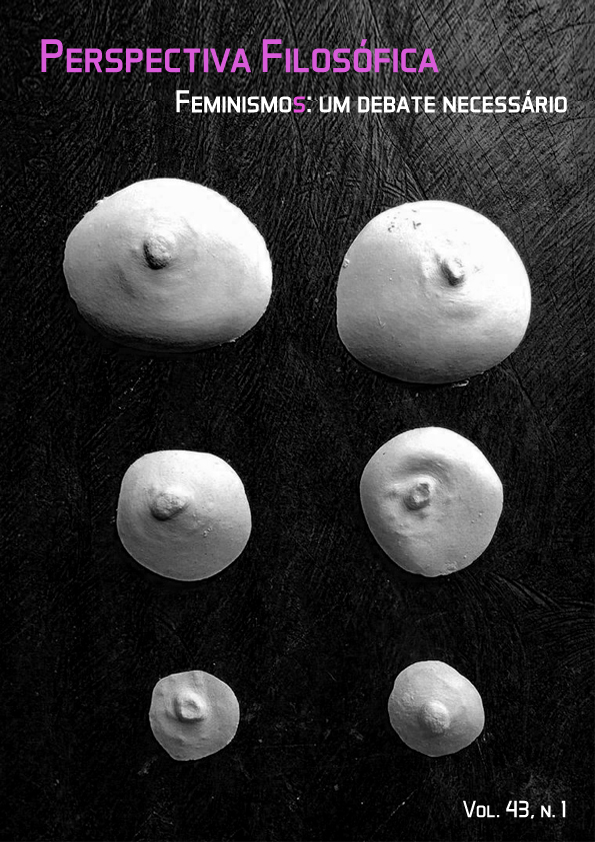Vestígios da vida de Hipácia de Alexandria
Keywords:
gender, platonism, chastity, freedomAbstract
It is a fact that ancient accounts of Hypatia of Alexandria are few and that most of them describes only the death of the philosopher. When we try to reconstruct her life, we face nothing more than vestiges. Through the study of the ancient sources and the exam of the themes they present, this article questions contemporary interpretations of Hypatia’s life from a gender perspective. The term gender is here understood as a category of analysis that allows us to discuss the function of gender in the set of social interactions and the contributions of gender to historical studies. Three topics are thus developed: 1. Hypatia’s Platonism, which is related to her way of life. 2. The public nature of her lectures, which leads us to the discussion of the public/private relationship and of Hypatia’s freedom in the scope the normative order that begun to be established at the end of the 4th and beginning of the 5th century AD, that is, during her lifetime. 3. The relation of chastity and the practice of virtues, which was a component of the Platonic way of life, and also the symbolical importance of her virginity as well.References
FOCIO. Bibliotheque. Tradução René Henry; Jacques Schamp. Paris: Les Belles Lettres, 1959-1991.
[JOÃO DE NIKIU]. The Chronicle of John, Bishop of Nikiu. Translated from Zotenberg's Ethiopic Text. Translated with an Introduction by R. H. Charles. Oxford, 1916.
SOCRATE DE CONSTANTINOPLE. Histoire Ecclésiatique. (Livros I e VII). Traduction Pierre Perichon; Pierre Maraval. Introduction, notes et index par Pierre Maraval, P. Paris: Cerf, 2007.
DAMÁSCIO, Vita Isidori] Suda on-line. Bizantyne Lexicography.(http://www.stoa.org/sol/).
Hesychii Milesi Onomatologi quae supersunt cum prolegominis, J. Flach (ed.). Leipzig, 1882).
SYNESIUS DE CYRÈNE. Correspondance. Texte établi par Antonio Garzya. Traduit et commenté par Denis Roques. Paris: Les Belles Lettres, 2000.
ALEXANDRE, Monique. “De l’annonce du royaume à l’église”. In: Pantel, Pauline Schmitt (dir.). Histoire des femmes em Occident. I. L’antiquité. Paris: Perrin, 2002. pp. 537-578.
BENEVOLO, Leonardo. História da cidade. Tradução Silvia Mazza. São Paulo: Perspectiva, 2012.
BERETTA, Gemma. Ipazia d’Alessandria. Roma: Editori Riuniti, 1993.
BOEHRINGER,Sandra; CUCHET, Violaine Sebillotte (dir.). Hommes et femmes dans l’Antiquité grecque et romaine. Le genre: méthode et documents. Paris: Armand Colin, 2011.
BURRUS,Virginia. The Heretical Woman as Symbol in Alexander, Athanasius, Epiphanius and Jerome. The Harvard Theological Review, Vol. 84, Nº. 3,1991.pp. 229-248.
CHANTER, Tina. Gênero: Conceitos-chave em filosofia. Porto Alegre: Artmed, 2011.
DEAKIN, Michael A.B.Hypatia and Her Mathematics. The American Mathematical Monthly Vol. 101, Nº 3, 1994. pp.234–243.
DIAS, Paula Barata. Hypatia and the Idioscyncrasies of Christianity in Egipt –A Study of the Events Occured at Easter 415 A. D. in Alexandria. In: Souza, Rogério (et alli). Alexandria ad Aegyptum. The Legacy of Multiculturalism in Antiquity. Coimbra, Alexandria: CITCEM, CECH, s/d. pp. 302-319.
DUBY, Georges; PERROT, Michelle. “Écrire l’histoire des femmes”. In: Pantel, Pauline Schmitt (dir.). Histoire des femmes em Occident. I. L’antiquité. Paris: Perrin, 2002. pp.11-24.
DZIELSKA, Maria. Hipátia de Alexandria. Tradução Miguel Serras Pereira. Lisboa: Relógio d’Água, 2009.
ÉVRARD, Étienne. À quel titre Hypatie enseigna-t-elle la philosophie? Revue des Études Grecques, tome 90,1977.pp. 69-74.
GOULET-CAZÉ, Marie-Odile. “L’arrière plan scolaire de la Vie de Plotin”. In: Luc Brisson (et alli). Porphyre. La vie de Plotin. vol. I. Paris: Vrin, 1982. pp. 231-327.
HADOT, Ilsetraut. Le problème du néoplatonisme alexandrin. Hiéroclès et Simplicius. Paris: Études Augustiniennes, 1978.
HADOT, Pierre. A figura de Sócrates. Tradução Flávio Fontenelle Loque e Loraine Oliveira. São Paulo: Loyola, 2012.
HAAS, Christopher. Alexandria in Late Antiquity. Topography and Social Conflict. Baltimore and London: The Johns Hopkins University Press, 1997.
LISSARAGUE, François. “Femmes au figuré”. In: Pantel, Pauline Schmitt (dir.). Histoire des femmes em Occident. I. L’antiquité. Paris: Perrin, 2002. pp. 203-301.
MÉNAGE, Gilles. Historia de las mujeres filósofas. Tradução Mercè Otero Vidal. Introducción y notas de Rosa Rius Gatell. Barcelona: Herder Editorial, 2009. (Primeira edição: Historia Mulierum Philosopharum, Ludguni, Apud Anissonios, Joan. Posuel, & Claudium Rigaud, 1690).
MOKHTAR, Gamal (ed.). História Geral da África. II: África Antiga. Brasília: UNESCO.PÉPIN, Jean. “La dernière parole de Plotin”. In: Luc Brisson (et alli). Porphyre. La vie de Plotin. vol. I. Paris: Vrin, 1992. pp.355-384.
RIST, J. M. “Hypatia”. Phoenix, Vol. 19, Nº. 3, 1965. pp. 214-225.
RONCHEY, Silvia. “Hypatia the Intellectual”. In: Fraschetti, A. Roman Women. Chicago: The University of Chicago Press, 2001. pp. 160-189.
SANTOPRETE, Luciana Gabriela Soares. “Primeiro repertório bibliográfico dos estudos em língua portuguesa dedicados ao Neoplatonismo da Antiguidade Tardia. Parte I: Histórico da pesquisa”. Revista Archai, nº 5, 2010. pp. 151-216. (http://periodicos.unb.br/index.php/archai/article/view/1572)
SIERRA DEL MOLINO, Rosa. “Hipatia e la cerrazón del Cristianismo: de la libertad y amor a la verdad o “‘el arte de vivir’”. In: Henríquez, German Santana. (ed.). Y las letras encontraron su asiento: mujer y literatura. Madrid, Ediciones Clásicas, 2011. pp. 65-82.
SUAREZ, Amalia Gonzélez. “Hipatia: Otra hija del Nilo”. Devenires. Revista de Filosofía y Filosofía de la Cultura. Nº 22,2010.pp. 16-31.
SVITZOU, Irene. “The case of Hypatia. In: Moutsopoulos, E. Philosophy in Hellenistic Alexandria. Proceedings of the Conference Held at the Bibliotheca Alexandrina. Athens,2006.pp. 79-88.
WOOLF, Virginia. Um teto todo seu. Tradução: Bia Nunes de Souza. São Paulo: Tordesilhas, 2014.
Downloads
Published
Issue
Section
License
A Revista Perspectiva Filosófica orienta seus procedimentos de gestão de artigos conforme as diretrizes básicas formuladas pelo Conselho Nacional de Desenvolvimento Científico e Tecnológico (CNPq). http://www.cnpq.br/web/guest/diretrizesAutores que publicam nesta revista concordam com os seguintes termos:
Os autores mantém os direitos autorais e concedem à revista o direito de primeira publicação, sendo o trabalho simultaneamente licenciado sob https://creativecommons.org/licenses/by/4.0/deed.pt_BR que permite o compartilhamento do trabalho com reconhecimento da autoria e publicação inicial nesta revista.
Os autores têm autorização para assumir contratos adicionais separadamente, para distribuição não-exclusiva da versão do trabalho publicada nesta revista, com reconhecimento de autoria e publicação inicial nesta revista (Consultar http://opcit.eprints.org/oacitation-biblio.html).

Esta revista está licenciada com uma Licença Creative Commons Atribuição 4.0 Internacional.













